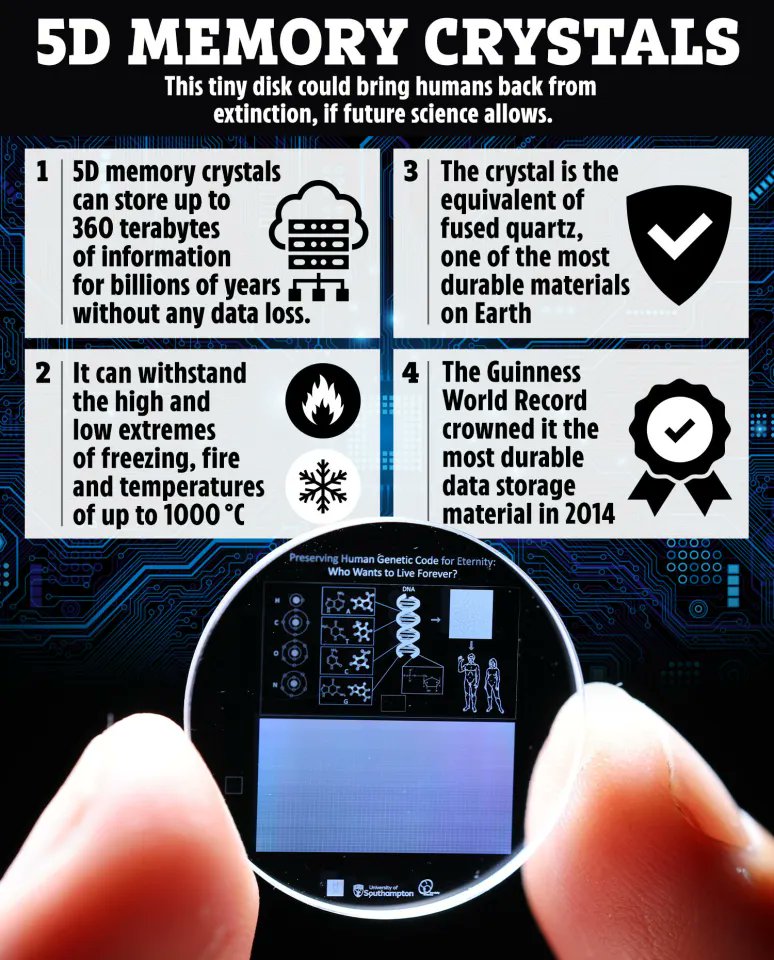Scientists from the United Kingdom have successfully stored the entire human genome on a revolutionary “5D memory crystal.” This innovative technology has the potential to endure for billions of years and withstand extreme conditions.
Developed by researchers at the University of Southampton’s Optoelectronics Research Centre, the crystal can store up to 360 terabytes of information. It is incredibly resilient, withstanding:
– Freezing temperatures
– Fires
– Direct impact force
– Cosmic radiation
– Temperatures up to 1,000 degrees Celsius
This technology was recognized with the Guinness World Record for “most durable digital storage material” in 2014.

The team, led by Professor Peter Kazansky, used ultra-fast lasers to inscribe the human genome data into nanostructures. The information is translated into five dimensions:
– Height
– Length
– Width
– Orientation
– Position
This breakthrough opens possibilities for:
– Creating an everlasting repository of genomic information
– Restoring complex organisms
– Recording plant and animal species facing extinction
– Safeguarding historical documents
Thomas Heinis, Imperial College London, praises the achievement but raises questions about future readability.
The crystal is stored in the Memory of Mankind archive in Austria. Previously, the technology was used to store Isaac Asimov’s “Foundation” trilogy and launched into space.
This innovation paves the way for preserving humanity’s legacy and safeguarding its future.
